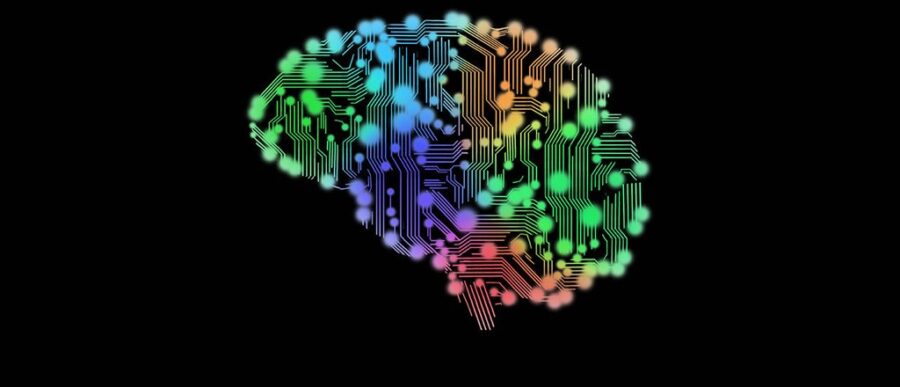The quest to give machines human-level intelligence has been around for decades, and it has captured imaginations for far longer — think of Mary Shelley’s Frankenstein in the 19th century. Artificial intelligence, or AI, was born in the 1950s, with boom cycles leading to busts as scientists failed time and again to make machines act and think like the human brain. But this time could be different because of a major breakthrough — deep learning, where data structures are set up like the brain’s neural network to let computers learn on their own. Together with advances in computing power and scale, AI is making big strides today like never before.
Frank Chen, a partner specializing in AI at top venture capital firm Andreessen Horowitz, makes a case that AI could be entering a golden age. Knowledge at Wharton caught up with him at the recent AI Frontiers conference in Silicon Valley to talk about the state of AI, what’s realistic and what’s hype about the technology, and whether we will ever get to what some consider the Holy Grail of AI — when machines will achieve human-level intelligence.
An edited transcript of the conversation follows.
Knowledge at Wharton: What is the state of AI investment today? Where do we stand?
Frank Chen: I’d argue that this is a golden age of AI investing. To put it in historical context, AI was invented in the mid-1950s at Dartmouth, and ever since then we’ve basically had boom and bust cycles. The busts have been so dramatic in the AI space that they have a special name — AI winter.
We’ve probably had five AI winters since the 1950s, and this feels like a spring. A lot of things are working and so there are plenty of opportunities for start-ups to pick an AI technique, apply it to a business problem, and solve big problems. We and many other investors are super-active in trying to find those companies who are solving business problems using AI.
“There’s a set of techniques called deep learning that when married with big amounts of data really gets very accurate predictions.”
Knowledge at Wharton: What brought us out of this AI winter?
Chen: There’s a set of techniques called deep learning that when married with big amounts of data really gets very accurate predictions. For example, being able to recognize what is in a photo, being able to listen to your voice and figure out what you’re saying, being able to figure out which customers are going to churn. The accuracy of these predictions, because of these techniques, has gotten better than it has ever gotten. And that’s really what’s creating the opportunity.
Knowledge at Wharton: What are some of the big problems that AI is solving for business?
Chen: AI is working everywhere. To take one framework, think about the product lifecycle: You have to figure out what products or services to create, figure out how to price it, decide how to market and sell and distribute it so it can get to customers. After they’ve bought it, you have to figure out how to support them and sell them related products and services. If you think about this entire product lifecycle, AI is helping with every single one of those [stages].
For example, when it comes to creating products or services, we have this fantasy of people in a garage in Silicon Valley, inventing something from nothing. Of course, that will always happen. But we’ve also got companies that are mining Amazon and eBay data streams to figure out, what are people are buying? What’s an emerging category? If you think about Amazon’s private label businesses like Amazon Basics, product decisions are all data-driven. They can look to see what’s hot on the platform and make decisions like “oh, we have to make an HDMI cable, or we have to make a backpack.” That’s all data-driven in a way that it wasn’t 10 years ago.
Knowledge at Wharton: What sectors do you think are most promising for AI? I know AI touches everything.
Chen: I really believe, and this is our investing strategy, that AI is going to touch every single industry. AI is a set of computer science techniques that, like databases, will get into all of the applications. So for me, asking that question, which sectors is AI good for, is a little like asking which sectors is the database good for. And the answer is, well, all of them.
Databases made it cheap and free to store and sort and count information. AI makes it cheap for you to make predictions and recognize things and pictures, and talk and understand language. All applications are going to benefit from those techniques.
Knowledge at Wharton: A McKinsey report found that despite all the promise and excitement of AI, businesses are still hesitant about adopting it. One reason they cite is they still don’t see the return on investment on AI. Another reason is they lack the manpower, the skills, to actually implement it. What do you say?
Chen: Every new set of computer techniques will create a temporary imbalance in that the people who know the most about it are scarce, and therefore very expensive and not big in number. Then the imbalance works itself out as universities and groups and other places start training more and more of these people. So I think we’re going to turn the corner on that in AI. Just as an anecdote, the top three AI computer science classes at Stanford are “Intro to AI,” “Natural Language Processing” and “Vision Processing.” … Each one of those classes has or is approaching 1,000 students. We’re going to work through the imbalance and get more trained people to the frontlines.
“Look for opportunities where you want to figure out what is the next product or service that people want to buy…. The answers are out there if you look for them.”
On the [view that businesses are] not going to get their ROI, I think that is a failure of imagination. AI will definitely either increase revenue or decrease costs, which are the two things every business wants. They just need to think it through…. Would it be valuable to your business if you could identify customers who are about to churn and get them a relevant, targeted message? Of course, that’s valuable. Would it be valuable for you to figure out what is the optimal price to charge for any given customer? Of course, that would be valuable.
Would it be valuable for you to be able to predict how to maximize the number of people who will see a particular marketing message of yours, whether it’s on Facebook, TV, YouTube or elsewhere? Of course, that would be valuable. So anybody who basically sits back and says, “Look, there’s going to be no positive ROI for AI,” is just not thinking about it right.
Knowledge at Wharton: What’s ready and not ready for primetime in AI?
Chen: What’s ready right now is what the community calls narrow artificial intelligence. Narrow artificial intelligence is contrasted with artificial general intelligence, which is what humans have — humans can learn almost anything that you put in front of them. They can learn to ice skate. They can learn to do double entry bookkeeping. They can learn how to recognize people. They can learn how to speak other languages. We have this amazing computer in our heads called the brain that is remarkably good at learning new tasks.
We don’t have a research agenda that will get us to artificial general intelligence. So what’s working is narrow intelligence. For example, give me a picture and I’ll tell you what’s in it, or talk to me and I’ll tell you what you said — all of those things are fantastic. Let’s not let lack of progress on artificial general intelligence scare people away. Also, what businesses can most profit from is narrow intelligence.
Look for the opportunities where you need to make better predictions. Look for the opportunities where you want to have a closer relationship with your customer with a chat interface. Look for opportunities where you want to figure out what is the next product or service that people want to buy, and what data can inform that decision as opposed to [listening to] a product genius. The answers are out there if you look for them. These narrow intelligences are perfect for businesses. That’s what’s working.
What’s not working is artificial general intelligence, but that’s okay. That can be a research problem. If we stopped all of the AI research right now, there’s at least 20 years of fruitful activity where we take the techniques we already know and put them in business applications.



